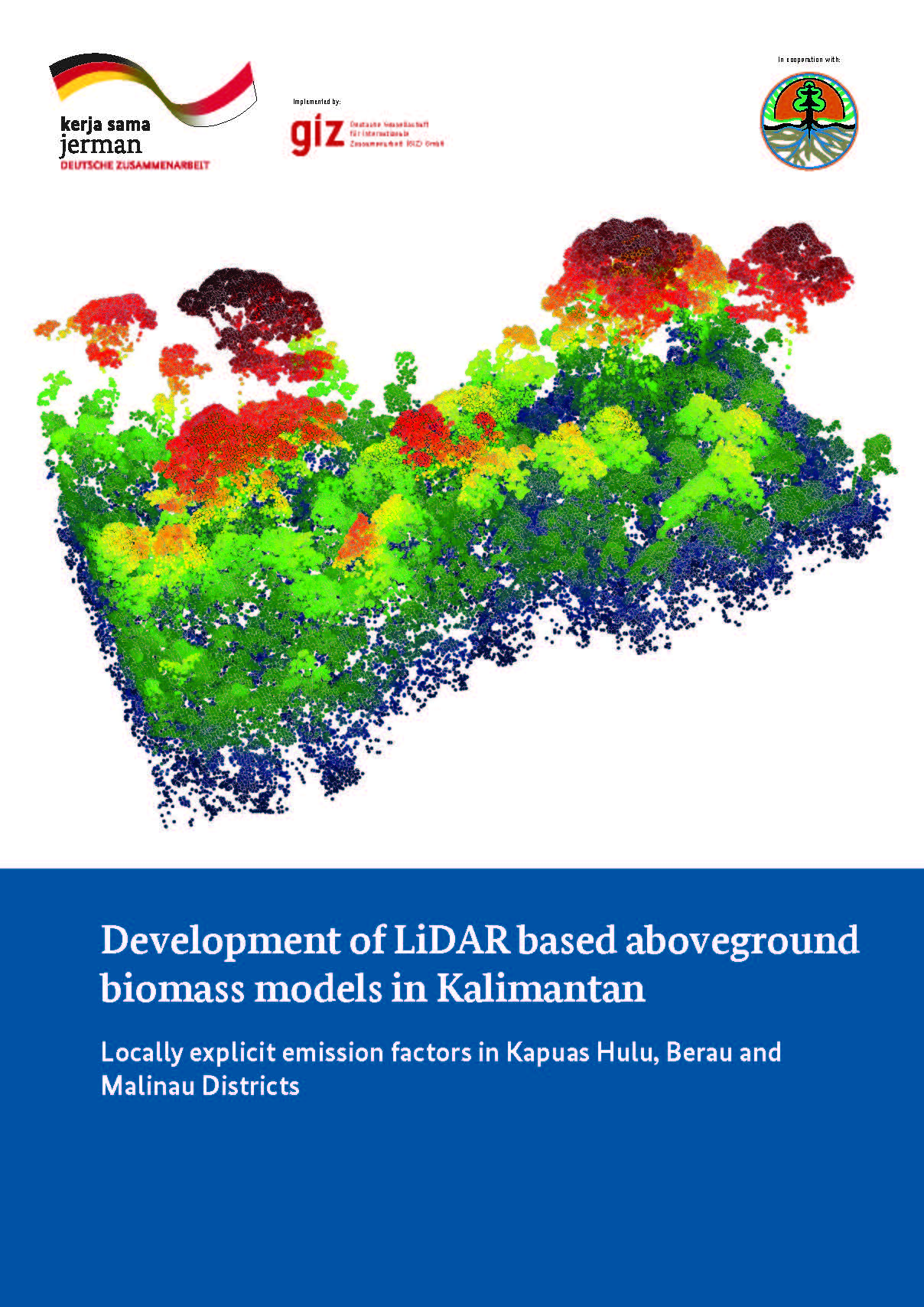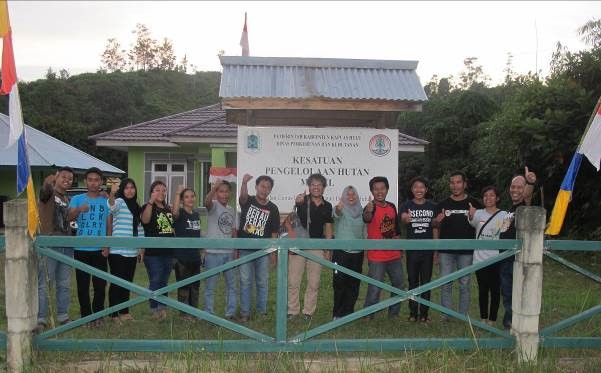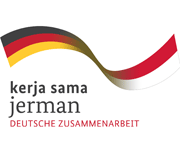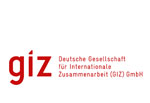FORCLIME
Forests and Climate Change ProgrammeTechnical Cooperation (TC Module)

Select your language

Support to REDD+ demonstration activities is a key feature of the FORCLIME programme, providing decision-makers with experience of how REDD+ can be implemented “on the ground”.
A forest reference emission level (FREL) is a benchmark for assessing a country’s or region’s performance in implementing REDD+ activities. FORCLIME supports three districts in Kalimantan in developing their FREL, namely Kapuas Hulu (West Kalimantan), Berau (East Kalimantan) and Malinau (North Kalimantan).
One of the parameters needed to develop a FREL are emission factors to quantify the loss of carbon in case of degradation or deforestation. Due to very specific characteristics of forest ecosystems in different regions and hence greatly varying carbon stocks, it is reasonable to develop locally explicit emission factors, as so far their forests are categorized as same forest types in the national system. To increase accuracy of forest carbon measurements in the future, FORCLIME has developed locally explicit emission factors for above ground biomass (AGB) in all three pilot districts based on data captured with Light Detection And Ranging (LiDAR) sensors.
FORCLIME has now published the technical report on this study. The full publication can be downloaded here
For more information, please contact:
Stephanie Wegscheider, Development Advisor for GIS and Remote Sensing

With the aim to get insights into the progress made through the Young Professional Forester programme (Bakti Rimbawan), the Center for Planning and Development of Forestry Human Resources (Pusrenbang SDM - KLHK) and FORCLIME conducted a monitoring assessment in ten Forest Management Units (FMUs) across Indonesia. Among the FMUs assessed during August and September 2016 was FMU Kapuas Hulu in West Kalimantan, which employs 12 foresters through the Bakti Rimbawan programme.
The Young Professional Forester programme has been launched by the Ministry of Environment and Forestry in 2014, and since then is posting young foresters and Forestry Vocational High School graduates at the FMUs. The programme aims to improve the professional skills of the young foresters, and support FMU development in the field.
According to the Head of FMU of Kapuas Hulu, the young foresters, which make up 40 percent of FMU Kapuas Hulu staff, have good competencies and are the "engine" for FMU Kapuas implementation. "I hope the Bakti Rimbawan programme will continue, so that FMU Kapuas Hulu operations can be implemented well," he added.
For further information, please contact:
Edy Marbyanto, Strategic Are Manager, Human Capacity Development

Since 2010 FORCLIME has been engaged in the Heart of Borneo (HoB) Initiative, an initiative of the three neighboring countries in the island of Borneo region of Kalimantan, Indonesia, Malaysia and Brunei Darussalam. The initiative promotes biodiversity conservation, sustainable development and livelihood improvement for the people living in the HoB area, particularly poor communities and women.
Shared learning on best practices from conservation and sustainable development for the benefit of the community is a main strategy to boost a change in natural resource management in the area. In this context, trained METT facilitators from FORCLIME and the Conservation Area Directorate at the Indonesian Ministry of Environment and Forestry (MoEF) conducted a training and shared learning event on METT from 21 – 25 September 2016 for 23 colleagues from the Sabah Forestry Department, Sabah Wildlife Department, Yayasan Sabah, Sabah Environmental Trust, and WWF Malaysia. The learning process was funded by WWF Malaysia.
METT stands for Management Effectiveness Tracking Tool that can help protected area authorities to assess how effectively their protected area is managed, and what they should do to maintain and/or improve existing conditions. As a management tool, METT consists of six elements, which are: context, planning, input, process, result and outcome. Threats analysis is also part of the tool, following as a second step after the assessment of general information of the protected area.
During the training in September 2016, a combination of methods ranging from lectures, group discussions, and field visits to Kinabalu National Park as well as an ECOLINC project site in the buffer zone of Kinabalu National Park were conducted to help participants in getting a better understanding about the application of METT.
Participants reported that the learning process was successful and met their expectations as expressed during the first day of the training. Some of the participants are planning to implement the tool at their conservation sites in the future to help improve the management of their protected areas.
For more information, please contact:
Ismet Khaeruddin, Strategic Area Manager, Biodiversity and Management of Protected Areas
 |
Supported By: |
  |